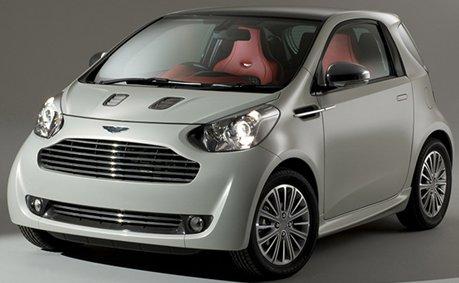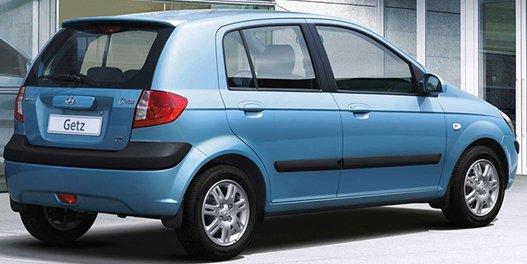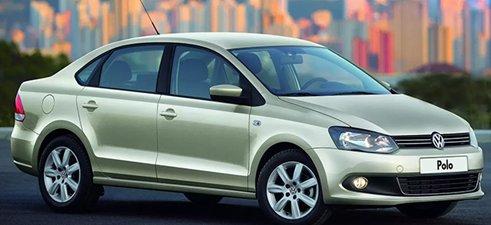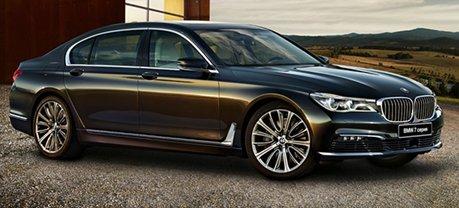The purchase of a used car is a profitable investment that enables a person to get a comfortable vehicle at a reduced cost. In this case, you need to understand that there are certain risks that are hidden in breakdowns and defects. Sellers often do not tell about them, in order to buy quality transport, you need to know how to choose a used car. There are several basic parameters that you need to pay attention to initially, and the article will describe the basic tips.
Content
Features of a used car
All used cars are different from new ones, because there have already been one or more owners who have already used certain resources and transport capabilities. In this case, the buyer needs to understand that after the purchase, you can make a minimum investment in standard repairs and drive for a long time without breakdowns, and there are cases when the transport breaks down constantly and you cannot do without capital investments. Moreover, such a restoration can significantly affect the cost, sometimes the repair is the price of the entire machine.
There are several reasons why people buy used cars:
- Significant budget savings.
- You can buy an expensive class at a reduced cost.
- There are excellent configurations to choose from.
- In some cases, if the transport is many years old, overhauls of the engine or body may have already been done, which can reduce further investments in transport.
- Factory defects have already appeared.
- Used cars often have additional items that you don't need to buy - alarms, music, and more.
Before buying, it is important to check the main components of the vehicle, regardless of which used car to choose. This list includes the engine and its work with the main elements, the transmission, the condition of the body and interior, the health of the electrical system, and the fuel system. There is no universal vehicle that will fit all parameters, and when choosing, it should be understood that there will be shortcomings in any used car, but they can be large or insignificant, and can also be easily eliminated.
Types of used cars by class
Many manufacturers offer vehicles in different classes, each differing from each other in size and other parameters. Based on the type, anyone can find a car for their needs.
A class

Such cars are the most compact, they are equipped with engines with low power, but this has a positive effect on fuel consumption. In addition, the size makes parking easier in big cities. Often the wheels are small, about R12-13, and the body is made in the form of a hatchback or station wagon, but with an extremely short wheelbase. It is recommended to buy for girls or people who travel a lot around the city.
pros:
- Small size makes parking easy.
- The turning radius provides excellent maneuverability.
- Low-power motors help save on fuel consumption.
- Minimum transport tax.
- There are options for 4 doors.
Minuses:
- Low altitude, so it can be difficult in winter or off-road driving.
- Low top speed.
- Wheel size affects flotation.
- A large person can feel cramped inside.
- The trunk dimensions are very small.
To class

Medium-sized transport, which is up to 4 meters long. It is produced in a different body; motors of medium power are used for work. A car with a small wheelbase, but this type is suitable for daily use and driving to work, to the store or to the country. We can say that the car is well suited for a family.
Pros:
- Convenient parking.
- Excellent maneuverability in urban environments.
- A wide range of trim levels.
- Optimum comfort level.
- Good engines in terms of fuel consumption and power.
- Adequate luggage compartment for transporting various items.
Minuses:
- The back will be cramped for 3 people.
- Small ground clearance.
C class

This type of transport is presented in the sedan, station wagon and hatchback bodies. All models are characterized by a comfortable and spacious interior, the length of the car is about 4.5 meters. The motors are quite powerful, which makes it possible to accelerate on the track and make comfortable overtaking. It is recommended to buy as a family car, daily driving, this class is perfect for a taxi.
Pros:
- Roomy trunk and interior.
- Large selection of body shapes.
- Motors with a volume of 1.6-2.0 liters, sometimes more.
- Optimum power, resulting in good dynamics.
- Stability on the road due to the mass of transport.
- Rich configuration.
Minuses:
- Not the smallest fuel consumption in the city.
- Harder to park.
- Turning radius increased.
D class

Larger models are often sedan-style. It is recommended to buy a used car for families or as a service vehicle. Manufacturers pay a lot of attention to equipment and safety, and the motors are often very powerful, starting at 2 liters.
Pros:
- There are many nice little things that increase the level of comfort, even with the usual equipment.
- Excellent security level.
- The body is made of thick metal.
- High quality paint, interior and other elements.
- Great design.
Minuses:
- Average fuel consumption is 10-12 liters.
- Expensive spare parts and repair work.
E class

This class is considered representative, differs in size, high power. Often, used cars are bought by large companies as official vehicles or by people who need to emphasize their own status.
Pros:
- Large interior with a high level of comfort.
- Volumetric trunk.
- Lots of airbags and other protective equipment.
- High top speed.
- Excellent external data.
- Prestige, which is reflected in the attitude towards the driver in the stream.
Minuses:
- Fuel consumption can be 13 liters or more in a city.
- High tax fees.
- Difficult to maneuver in narrow streets.
- The cost of the supported models from 600 thousand rubles.
Used car selection parameters
To determine how to choose the right used car, you need to know the basic parameters that you need to look at.
Mileage indicators
The mileage indicator in used vehicles will always differ, depending on the year of manufacture, conditions of use and the number of owners. This is an important parameter that indicates the resource of the motor; after a certain indicator, a major overhaul is required. Often, the limit for many engines is up to 400 thousand km, and after that the compression disappears and it is necessary to replace the main components. Basic tips:
- If the mileage is up to 80,000 km, then you can use transport for active work or taxi ride.
- Value 100-150 thousandkm is quite suitable as a family transport, since the resource will be sufficient for many more years, and the car will be able to drive every day, you can go on trips on it.
- A mileage of more than 200 thousand km is suitable for people who will not use transport often and a trip is planned once a year. In this case, the resource will be sufficient for 10 or more years.
- Indicators over 280 thousand km may indicate the need for an early repair, and the exact time is difficult to guess, it depends on the brand and the degree of wear. It is best to buy vehicles with this odometer value at a reduced price.
It is worth noting that German or Japanese-made engines can serve without overhaul within 500 thousand km to 1 million.
Year of issue
The mileage and general condition can be estimated by the year of manufacture, the equipment, as well as the price and availability of consumables for repairs, will also depend on this. It should be understood that some machines such as 2000 will perform better than the newer 2009 model. When choosing a used vehicle, mileage must be compared with age. On average, a person, with daily and normal use of the car, will roll 10-30 thousand km / year. In this case, for a car produced in 2009, the value on the odometer of 160 thousand km may be true, and if the production was in 2000, and on the odometer it was 130 thousand km, then there is a probability of twisting indicators. Experts advise:
- For active use of transport or work in a taxi, buy models aged 5-7 years.
- For a family, options up to 15 years old are suitable.
The rest of the cars are risky to buy, because they may not have the necessary parts.
Body condition
Body assessment is another important part of the choice. When examining, you should pay a lot of attention to the paint, the presence of places of corrosion. First of all, the buyer needs to inspect the fenders, the lower part of the doors, the sills, as well as the condition of the body under the rubber bands. In the presence of foci, corrosion will constantly destroy the metal, therefore, without additional processing, certain parts will simply rot. If operation is planned for a long time, then the choice should be given in favor of a car without rust spots.
If the purchase is only for 2 years of use to complete a specific task, and after that there will be a sale, then you can pick up options with small foci that are easily eliminated.
The paint on the body must lie flat and be the same on each element, otherwise we can talk about the presence of accidents and other problems. The inspection should evaluate the geometry of the body, the evenness and integrity of the struts. If there are certain defects, then you can try to reduce the cost.
Interior condition
In used cars, the salon can tell a lot, including the method of use and the owner's habits. When choosing, you need to look at the seats, which can be worn out and squeezed. Also assess the condition of the torpedo, possible holes from cigarettes on the casing, worn steering wheel, handles. The more such shortcomings, the higher the chances that the car was in a taxi or was heavily exploited, which may affect the remaining resource.
Buying a vehicle for business needs requires cleanliness and beauty of the salon, for private needs you can buy a car that is not in its best condition, but after 1-2 days it will be possible to clean everything and bring the condition to almost perfect.
Undercarriage condition
The suspension of any vehicle provides a smooth ride. Often, manufacturers make it hydraulic or pneumatic. When choosing, you need to put the car on a flat surface and see the location of the body to the coating, it should stand level without distortions with uniform ground clearance.
To assess driving performance and smoothness, you should drive over pits, bumps and other irregularities that can give out knocking, extraneous sounds:
- A soft crossing of irregularities indicates the health of all elements, so transport can safely go on long trips.
- Hard sensations and the presence of jolts can indicate wear on certain parts, but this is not critical and you can move around the city.
- Strong body rolls, pronounced knocks indicate maximum wear and the need to replace shock absorbers, springs and other suspension elements.
Transmission
Based on the brand and equipment, the gearbox can be mechanical or automatic. The choice depends on personal preference, but the work must be checked. To do this, you should look at the play of the lever, and all speeds should be switched smoothly and without problems. With a working automatic transmission, the transition will be without jerks and delays. In the presence of defects, we can talk about wear and tear, which entail repair work or a complete replacement of the unit.
Engine operation
The volume of the power unit and its power indicators are prescribed in those. passport, and the data can be roughly checked while driving:
- An engine in the volume of 1.2-1.6 liters should be characterized by a smooth acceleration, which is sufficient for a quiet ride.
- Models with a 1.8-2.5 liter engine during the test should confidently pick up speed in the event of a sharp press on the pedal. If the speed is picked up slowly and smoothly, it can be argued that the unit is heavily worn and that it will soon need to be repaired.
During the check, no third-party sounds should appear, a serviceable motor starts easily and quickly, and the exhaust will be transparent, without smoke. If white or black smoke comes out of the pipe, then the ignition is knocked down or the fuel system needs to be adjusted. In addition, there may be injection problems that require repair, but the cost is acceptable. If you have minor problems that are easily eliminated by the settings, you can buy a car for a family or work.
Electrician
Used vehicles often have electrical problems that are caused by old age. In this case, it is very important that the car is not "drowned". As a result of contact with water, the wires oxidize, certain nodes malfunction and the risk of a short circuit increases, and the buyer will need to completely replace the wiring, this process takes a lot of time, effort and is expensive.
You can check the serviceability by simply turning on the main lighting and other devices. Be sure to check the air conditioner, the operation of the tape recorder and power windows and other parts. It is not recommended to buy vehicles with a problematic electrician, since it can be very difficult to find defects, and driving in such a car is dangerous.
Chassis
Looking at the wheels, you can understand when you need to change tires approximately. The new wheels will be up to about 3 mm in height, and the rules allow the use of tires with a height of up to 1.6 mm, if the value is lower, then driving on the roads is prohibited. The buyer will definitely have to assess the condition of the rubber not only by the tread, but also by the side punctures that can be patched, cracks in the rubber itself from old age, and the presence of "bumps". The flatness of the discs, the presence of cracks on them and other defects are also assessed.
Muffler
An equally important component is the exhaust system. It is constantly exposed to aggressive external factors and, over time, requires the replacement of some elements. The muffler is the very first to suffer, there should be no holes in it, and this can be estimated by the volume of the sound when the engine is running. The fasteners are also being evaluated, in case of cracks on it or the complete absence of clips, the muffler can be lost along the way.
Fuel consumption
Fuel consumption is directly related to the class, the volume of the engine, as well as the specific model. There are passport data on consumption, and if the fuel system is faulty, then they will differ significantly in a large direction:
- For class A and B, gasoline consumption will be about 5-7 liters.When the seller says that the consumption in the city reaches 10 l / 100 km, you should be prepared for the costs of adjusting or repairing fuel equipment.
- For class D and E, fuel injection system is used, fuel consumption is within 8-11 liters.
type of drive
When choosing, you need to understand that the drive is different for each brand and model. The buyer needs to determine for himself which option will be suitable:
- All-wheel drive models provide excellent flotation. Transport is recommended for off-road, frequent driving on bumpy roads, since all 4 wheels are spinning. An excellent choice for hunters or fishermen as well as travel enthusiasts.
- Front-wheel drive is installed on most vehicles, including crossovers. They have the ability to connect a differential, which helps to get out of sand or mud, but in urban conditions the rear axle is disabled. For serviceability, you just need to drive into the mud or sand. Only front-wheel drive is installed in light vehicles, the front wheels are spinning. Such a car is maneuverable, easy to control, and the steering wheel can be easily turned with one hand.
- Rear-wheel drive pushes the car, and with the help of the front pair of wheels, the driver selects the direction. If you hit ice or a puddle at speed, there are risks of drifting to the side. When purchased, travel safety and comfort will be ensured by skills and quality tires on the rear axle. Such cars are more suitable for driving on dry roads.
Brand reputation
The brand and brand of a used car is an equally important parameter. The most reliable and best are Japanese and German vehicles. They are convenient, comfortable and practical, suitable for business, family, as a company car, but are expensive to maintain and purchase parts. Korean, Chinese and other brands are cheaper in all plans, but less reliable and comfortable.
Extra options
In order to choose the right used car, you will need to drive it into a pit or lift before buying it in order to assess the condition of the bottom and components that are under the car. Inspect the surface for smudges, dents, corrosion. This reduces the initial acquisition cost and indicates potential future repairs.
It is also important to check the documents so that the purchase does not cause problems with the law or the debts of the previous owner. There should be no bail, theft, fines or other troubles on the car. The seller must have the right to own and sell. All data is easily verified by VIN number, which is indicated in the technical passport.
The buyer needs to understand that the purchase is part of the investment, the purchase will need to be serviced in the future, so you need to assess the availability of spare parts and your own financial capabilities for service.
Tips for buying a used car
Experts have created some tips on how to choose a used car for beginners that can simplify the difficult task of choosing:
- You cannot buy a car with all available funds. It is always necessary to leave a small margin for repairs and contingencies. For this, 15% of the cost of the car will be enough. Moreover, the costs will always be, even if the previous owner drove only up to 1 year and the car is almost new.
- You cannot choose transport of the "buy any for 300,000 rubles" type. You need to specifically decide on the brand and choose several models for yourself, in the circle of which the search will be carried out. This will make it possible to make the most correct choice, in addition, during the search it will be possible to find out the features, frequent breakdowns and other problems typical for a given brand, a particular model.
- You always need to determine the average market value of the transport. This eliminates the fact of fraud on the part of sellers who offer cars at a very low cost, and also eliminates the likelihood of falling into the hands of dealers.
- You should not expect that a person will sell a high-quality and serviceable car for a price that is below the market average. When the owner urgently needs funds, the sale is carried out through intermediaries or resellers, who immediately give a certain amount. The rest of the options will be sold after accidents, with serious problems with the engine, transmission or other expensive components, often in case of documentary violations.
- The initial assessment of transport can be done by an ad on sales sites. You need to evaluate the quality and quantity of photos, description. If there is very little information and the seller offers to discuss everything by phone or in person at a meeting, then in 95% of situations they are resellers.
- With a phone call, you can get a lot of information and save your own time. To do this, you need to make a list of basic and specific questions that cannot be generalized to answer. For example, you can ask when was the last oil change, the repair of certain components, the period of vehicle ownership, etc.
- During the inspection, you always need to check the documents. To do this, it is recommended to use the traffic police website and other resources that allow you to find out about the pledge of a car and other problems with the law.
- You should always watch out for new ads on the sites. Some options are sold in a matter of hours or days. To buy high-quality transport at an affordable cost for the model, you need to constantly monitor the news and immediately call or come personally for an inspection.
- If used vehicles are bought in showrooms, then before signing the contract, you must carefully study its points. Standard document up to 6 pages. Time should be given for familiarization and it should not be taken constantly, in which case everything should always be re-read, it is possible that the papers will be corrected without the knowledge of the buyer.
- It is recommended to use a thickness gauge for a quality inspection of the body. With it, you can find out the thickness of the paint, which will indicate whether the car was a bit or other bodywork was carried out. When viewing, it is recommended to pay attention to the gaps, color differences from different angles, the presence of paint on rubber bands and other internal surfaces, glass and headlights, which must be the same. All this indicates the condition of the body and the possible work that was carried out with it.
- Often in a used car, the odometer data is incorrect. Many sellers roll it into tens of thousands before selling it. However, with a high mileage, the driver's seat, arm braid and gearbox knobs will be badly worn.
- During a test drive, you need to look at any little things, for example, how level the steering wheel is, how the vehicle behaves on a flat surface, during acceleration or braking, whether there are extraneous knocks, etc. At the same time, you can evaluate the work of internal control devices.
- After that, you should go to the service station so that the masters inspect the nodes in detail, this will help eliminate all fears. It is recommended to inspect not only the chassis, but also the motor, electrics and other most expensive components. The cost of diagnostics is small, but it can significantly save money in the future.
The article and all the tips in it allow you to choose the right used vehicle that can last for many more years with minimal breakdowns and problems.



